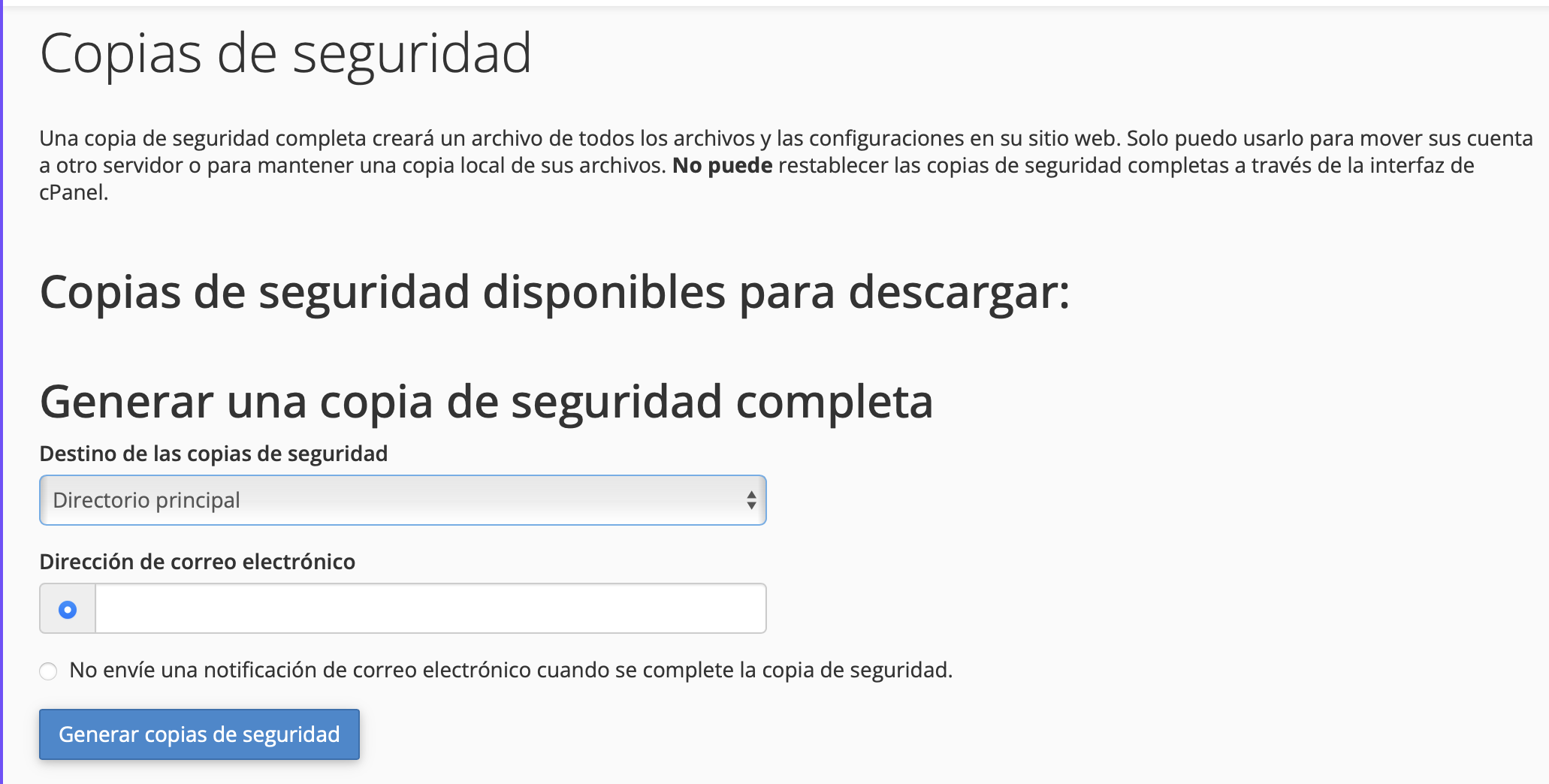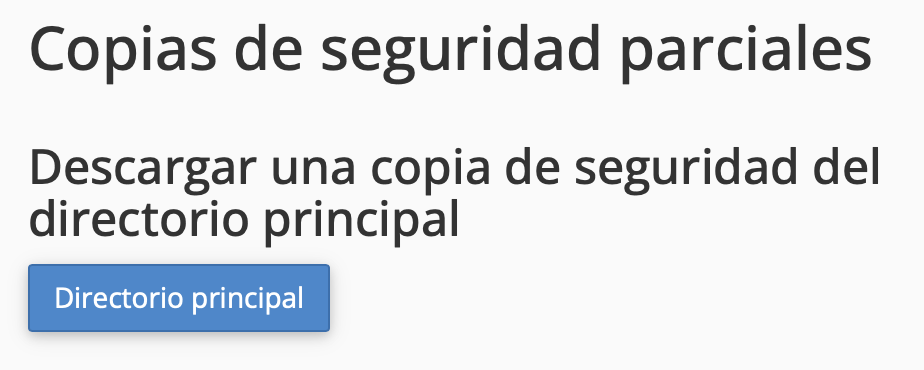Maintaining backups is one of the cornerstones of managing any website or email accounts. Having up-to-date copies gives you peace of mind, knowing you can quickly restore your site in case of human error, system failures, or a potential attack.
Below, we’ll walk you through how to download backups from cPanel step by step, ensuring the safety of your information and the continuity of your project.
1. Accessing cPanel
- Log in to your cPanel account using your administrator credentials, for example:
https://yourdomain.com:2083
Replaceyourdomain.comwith the domain name you have purchased. - Once inside, locate the "Files" section and click on "Backups".

2. Downloading a Full Backup
- In the Backups section, select "Generate a Full Backup".

- In the form that appears, enter your email address so you’ll receive a notification when the process finishes and you can download the file.

- Make sure you have enough space in your hosting account to store the backup file. If there isn’t enough space, the process can’t be completed properly.
- Once the backup generation is finished, you can download the complete file, which includes:
- Website files
- Databases
- Email accounts
- Configurations, passwords, etc.
Security tip: After downloading your full backup, delete it from the server to avoid storage issues and reduce security risks.
3. Downloading Partial Backups
If you only want to download specific parts of your site (for instance, email or certain files), go to the "Partial Backups" section under "Backups":

You’ll be able to download:
- Home Directory (all of your website files)
- Databases (MySQL)
- Email forwarders
- Email filters
Select the option you need to download and save the corresponding file to your local device.
4. Storage and Best Practices
- Frequency: Create backups as often as your site requires—weekly or monthly, for example—depending on how active and critical your data is.
- External Storage: Consider storing your backups on an external device (hard drive, cloud storage service, etc.) to have an additional copy.
- Security: Keep your backups in a secure environment to protect against potential attacks and failures.
- Available Space: Keep an eye on your hosting account’s storage usage. Having too many backup files can cause issues with storage and site performance.
All Set!
You’ve learned how to generate and download backups from cPanel. With these backups in hand, you’ll have greater peace of mind when managing your website, since you can easily restore it if something goes wrong.
Remember: It’s a good habit to schedule reminders to regularly download and store these backups, so you always have an up-to-date copy of your site.
Never underestimate the importance of backups in your web management strategy!
